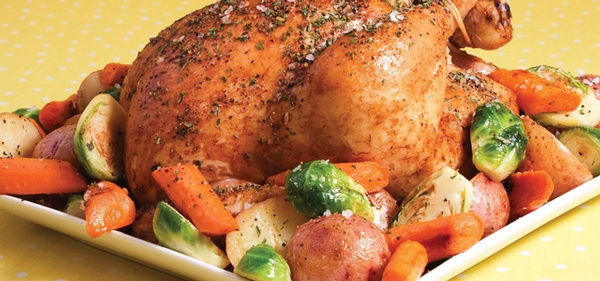Poultry Safety in an Ever-Changing World

In May 2012, the Food and Agriculture Organization (FAO) of the United Nations released its biannual publication, which focuses on the developments affecting global food and feed markets.[1] The estimated output in poultry production in 2012 is 103.5 million metric tons. This is only a slight increase (1.8 percent) over previous years, and FAO attributes this restraint on production growth to three main factors: the current high price of feed, the resurgence of avian influenza outbreaks in Asia and ongoing trade disputes. While the resurgence of avian flu is making itself felt in terms of trade barriers and bans, policy decisions related to both real and perceived food safety hazards continue to dominate import and export of poultry worldwide. Avian influenza is not the only pathogen of concern for the poultry industry. On a day-to-day basis, Salmonella and Campylobacter continue to present the biggest challenges and opportunities for the poultry industry and the poultry “farm-to-fork” continuum.
Salmonella and Campylobacter are two of the most common foodborne pathogens associated with human illness in the United States. Exposure to poultry meat has been identified as an important risk factor for illness from both of these pathogens. More recently, other foods, such as fresh produce, have also been recognized as significant vehicles of transmission. However, human foodborne disease involving Salmonella and Campylobacter is still often attributed to poultry.[2] While the poultry industry has taken a very diligent approach to food safety and continues to stay current on the “latest and greatest” in intervention strategies and on-farm best practices, outbreaks of foodborne illness associated with poultry continue to occur. During the early discussions and public meetings surrounding the implementation of the federal Pathogen Reduction: Hazard Analysis and Critical Control Points (HACCP) Systems Final Rule, the best management practices published by the National Turkey Federation were praised in particular by the U.S. Department of Agriculture Food Safety and Inspection Service (USDA FSIS) as a model for on-farm food safety production practices. However, as outbreaks of foodborne illness associated with poultry continue to occur and as government policy and regulations continue to utilize microbial performance standards, such as the pathogen prevalence on poultry carcasses and finished products as an indication of safety, the poultry industry will have to continue to step up to the challenge of developing multi-hurdle strategies to address these issues.
Common Contaminants of Poultry
While the focus is often on biological hazards, a number of contaminants (or hazards) can appear in the food product at any stage during its production, processing, storage and preparation. Effective food safety practices that are implemented and managed throughout the “farm to fork” continuum will minimize the risk and opportunity for contamination of the final product as well as minimize or even eliminate the impact of contamination that has already occurred. This all begins on the farm, where an in-depth understanding of the potential food safety hazards, often through an HACCP-based approach, is necessary to fully comprehend the interrelationships between animal health, biosecurity and food safety. Physical hazards may include lead shot (often more prevalent during hunting season), wire, wood chips (from litter), bones, metal screws and glass from thermometers used during processing. Chemical hazards of concern may range from chemicals and pesticides used on the farm to mycotoxins in feed and veterinary drug residues to cleaning solutions used in processing. To minimize the risk of contamination of poultry eggs and meat for consumption, it is important to minimize the risk of contaminants reaching commercial poultry flocks. Good farm management practices, such as hygienic practices and effective biosecurity procedures, will minimize the chance of contamination and optimize bird health. The majority of on-farm production practices and controls are directed toward the health, welfare and economic performance of the animal and often are not strictly for the control of human pathogens. In the more vertically integrated poultry production processes, these best management practices may begin with animal genetics and the selection of superior breeding stock for stress resistance, disease resistance and immune competence, thereby optimizing bird health and allowing the birds’ own immune systems to provide additional safeguards against contamination. In addition, the development of scientifically formulated feed can promote and maintain the health of the bird’s immune system throughout the grow-out period. Organic acids and probiotics may be incorporated into poultry feed as applicable to prevent the colonization of Salmonella in the gut.
Additional programs may focus on the sourcing, delivery and monitoring of feed and water, as these can be significant sources of microorganisms, such as Salmonella, on the farm. Other on-farm programs may deal with bird health and disease control, including vaccination where appropriate, from egg to chick to final processing; proper control of the environment (temperature, water and ammonia); wildlife; rodent and pest management; biosecurity (including buildings, equipment, employees and visitors); cull-bird disposal; litter management; animal welfare, including transportation controls for the proper transfer and movement of eggs, chicks/poults and finished birds; and adequate maintenance and sanitation of the house between groups. These programs will often vary in their level of detail; however, they are best supported by proper training of employees and through the documentation and verification of the effectiveness of these programs in controlling the identified hazards of concern. Monitoring and verification activities may include microbiological testing of samples ranging from feed, water and wastewater to environmental samples of litter, drag swabs, air plates and environmental sponge samples of surfaces to testing of poultry carcasses and of further processed raw and fully cooked products.
Not all of these programs may directly impact the presence or level of a specific pathogen on the birds; however, inattention to detail in implementing these best management practices may increase human pathogen loads in and on live birds.[3] Salmonella and Campylobacter are often referred to as part of the resident microflora of many species of poultry, notably chickens, turkeys and ducks. While affected animals often present no clinical symptoms of disease, these organisms are the main biological foodborne hazards of public health concern in poultry. Researchers at the University of Liverpool, United Kingdom, are studying the effects of stress on the prevalence and levels of Campylobacter in the gut of the chicken and on the spread of the organism, through subsequent shedding, to other birds in a house.[4] They are investigating the role that certain on-farm activities, such as those designed to address animal welfare, may have in controlling these organisms. While the vaccination of poultry against viral and bacterial pathogens of veterinary health concern, including some serovars of Salmonella, is a widespread and long-standing practice, the use of vaccination against pathogens of public health concern is a much more recent development and has been limited largely to serovars of prevalence and concern to public health and regulatory agencies. While specific activities such as vaccines targeting Salmonella spp. may have a direct impact on a specific food safety issue, the industry can’t control all the factors that may influence the level or prevalence of these organisms on poultry, including humidity and the disease condition of the bird. In addition, the complexity and multitude of on-farm management practices present challenges in assessing the contribution of any single best practice in reducing the prevalence of human pathogens on birds.
Contamination Control During Poultry Processing
Once the bird enters the processing (slaughter) facility, it enters another arena of food safety programs and HACCP wherein the facility must consider the incoming hazards associated with all raw materials (i.e., birds) to minimize risk and meet company, regulatory, customer and public health expectations for safety and quality. The food safety/HACCP team will identify all the potential food safety hazards associated with each stage of the production process, conduct a Hazard Analysis to determine the likelihood of occurrence and potential severity and identify any associated control measures. In addressing microbial hazards (pathogens) in particular, most poultry processors employ the “hurdle approach” to reduce the levels and prevalence of these pathogens during processing and on final product. This involves the use of multiple process control steps and interventions (i.e., hurdles) located throughout the process. The premise is based on the fact that each hurdle reduces the levels of the organism of concern, and after passing over many hurdles, the organism is less likely to be present, such as in the end product. Although the primary target for the poultry industry is Salmonella, food safety systems should be built with both Salmonella and Campylobacter in mind. However, most scientists and regulators agree that interventions and technologies in a processing facility, proven effective in reducing or preventing Salmonella, will also reduce or prevent other pathogens of concern, such as Campylobacter.
Several steps have been identified as being particularly effective in controlling microbial hazards during slaughter and processing. These control measures actually begin prior to receiving, where a common practice to mitigate the risk of microbial contamination on incoming live birds is the withdrawal of the animals’ feed prior (8 to 12 hours) to catching and transporting birds to the processing facility. Reducing gut contents prior to transport not only reduces cross-contamination during transport (reduced soiling) but may also reduce pathogen load and cross-contamination during processing if pathogens are present. The incidence and level of pathogens on poultry carcasses may vary considerably and depend not only on the prevalence and numbers of pathogens on the feathers and skin and in the intestinal tract, but also on the degree of cross-contamination that occurs from these sources during slaughter and processing. Once the bird enters the processing facility, limiting cross-contamination during the primary processing of the live animal, particularly during scalding, defeathering (picking) and evisceration, is extremely important. Scalding is one of the most important processing steps with regard to controlling the prevalence of pathogens such as Salmonella, as excessive contamination on incoming birds may cause the scalder water to become visibly and microbiologically contaminated. This organic matter (feces, blood, feathers, dirt, etc.) and any associated pathogenic bacteria on the surface of one bird may then be transferred to the surfaces of other birds “sharing” the scalder. This may further impact subsequent steps in the process, as the organic matter and associated microorganisms can then be driven into feather follicles during picking. Biomapping studies conducted by USDA FSIS at poultry plants throughout the U.S. found that in most plants, the prevalence of Salmonella increases as the carcasses traverse the pickers.[5]
Effective Food Safety Programs for Poultry
As is true with on-farm production, effective food safety management programs are necessary to reduce or eliminate the risk and hazards associated with poultry processing. These programs and best practices may include, but are not limited to, the use of intervention technologies and maintaining proper hygiene of employees and proper sanitation of equipment, surfaces and the environment during slaughter, fabrication and further processing of poultry and poultry products. The use of in-process sanitizers on belts and equipment, a myriad of carcass sprays and inside/outside bird washers can significantly impact the levels of bacteria on carcasses and further processed products. However, the overall effectiveness of these in-process systems may vary from plant to plant, as incoming loads on birds can vary tremendously. Therefore, the appropriate type of sanitizer and system must be based on an individual plant setup. Additionally, it is equally if not more important to properly validate these antimicrobial intervention strategies and any associated equipment involved in their application. This begins with reviewing the published literature and regulatory approvals and performing any necessary in-plant validation steps. In addition, the proper identification of the critical factors involved in the use and application of these antimicrobial intervention strategies must be carefully monitored and verified. Critical factors may begin with the temperature, pH and hardness of the water used, the size and shape of the spray nozzle used and the dwell time the product must be exposed to a particular chemical intervention to ensure maximum effectiveness.
Chilling is another opportunity to reduce and control bacterial contamination. While immersion chilling is still the predominant method used for broilers in the United States, air chilling is the method of choice for many broiler operations and turkey-processing plants. The use of either air or immersion chill (or both) is based on process control and often on desired quality. A substantial amount of bacterial reduction (both numbers and prevalence) can be accomplished in a properly balanced chiller, where controls are in place to monitor and maintain pH, temperature, flow rate, flow direction, chlorine concentration and concentration of organic material.[5] The continuous flow of water in these immersion-type systems is crucial in keeping these chillers from becoming a stagnant communal bacterial bath, as they are often portrayed.
Many poultry processors are installing a final antimicrobial spray or dip in their process. The placement of these systems at the terminal, post-chill point is advantageous in that the carcasses are as clean as they will be throughout the process, and the ability of any given chemical to contact bacteria on the surface of the skin without interference from organic material is highest.[5] However, and a reality for poultry, unlike many other species, is that the skin remains attached to the product, the exception of course being further processes for skinless products. For skin-on products, such as whole birds and parts, microorganisms located between the skin and meat surface as well as those that may become trapped in feather follicles can become potential problems as these products are further processed and prepared.
Conclusions
As mentioned previously, the prevalence and level of pathogenic organisms on poultry vary widely and may be affected by the time of year, region of the country, animal management and processing practices. Outbreaks of foodborne illness associated with Salmonella and Campylobacter in poultry products are often the result of inadequate cooking, mishandling, recontamination or cross-contamination from raw meats to other uncooked foods during processing and preparation in a processing plant, or commercial or home kitchen. In 1999, The National Advisory Committee on Microbiological Criteria for Foods identified cross-contamination during the preparation of raw chicken and the consumption of inadequately cooked poultry as significant sources of campylobacteriosis.6 Therefore, eliminating cross-contamination between raw and ready-to-eat foods during preparation, and proper cooking and storage of meats and poultry are essential to minimize the risk of illness associated with these products.
Ensuring the safety of poultry, no matter where it comes from, is a responsibility shared by all industry stakeholders, including, but not limited to, farmers, producers, processors and retailers as well as federal and state agencies. We must remember that food safety cannot be inspected into the product and that end-product testing is costly, time-consuming and unreliable at best. Instead, food safety must be built into the processes used in the production, manufacture and preparation of food products. This is done by focusing on building a strong foundation on common ground for food safety. These challenges become even more important as countries try to develop and maintain harmonization across international and cultural borders. Consumers cannot discern the safety of their food before buying it. They count on producers and processors to ensure that food safety is already built into their food by building it into their processes. Consumers have the right to expect the highest assurance of food safety and that it is the same everywhere, every time and for everyone—no matter where they live or where they eat. Furthermore, the poultry industry will need to stay ahead of the game and keep leading the charge in food safety as the consumption of poultry worldwide continues to grow.
Margaret D. Hardin, Ph.D., is vice president of technical services at IEH Laboratories & Consulting Group. She has held positions as associate professor of food microbiology at Texas A&M University, director of food safety and quality assurance with Boar’s Head Brand and director of food safety at Smithfield Packing Co., Sara Lee Foods and the National Pork Producers Council. She is currently on the editorial advisory board of Food Safety Magazine and works closely with the food industry in food safety.
References
1. www.fao.org/giews/english/fo/index.htm.
2. www.cdc.gov/outbreaknet/pdf/2008MMWR-Table2.pdf.
3. Stillwell, S. 2009. Food safety programs across an integrated poultry industry. International Association for Food Protection 96th Annual Meeting. Grapevine, TX.
4. www.thepoultrysite.com/articles/2002/link-between-broiler-intensification-and-foodborne-pathogens-explored.
5. pubs.caes.uga.edu/caespubs/pubcd/b1222.htm.
6. NACMCF. 1999. FSIS microbiological hazard identification guide for meat and poultry components of products produced by very small plants. Meat and Poultry Subcommittee of the National Advisory Committee on Microbiological Criteria for Foods.
Looking for a reprint of this article?
From high-res PDFs to custom plaques, order your copy today!








